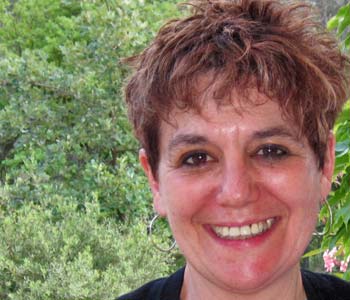Ana Siljak
Angel of Vengeance: The Girl Who Shot the Governor of St. Petersburg and Sparked the Age of Assassination
St. Martin’s Griffin
384 pages, 9 x 6 inches
ISBN 978 0312364014
In the simplest terms, this book is about Russia’s first female terrorist. On January 24, 1878, a young woman named Vera Zasulich posed as an ordinary petitioner to gain admission to the office of the governor of St. Petersburg, Fedor Trepov. Then she pulled a gun out of her large grey shawl and shot the governor point blank.
This one act propelled Vera from obscurity into worldwide fame, especially after her celebrity trial was covered by all of the major newspapers in Russia and abroad. By the end of 1878, Vera was one of the best-known women in the western world. European journalists and authors rushed to write about a peculiar brand of Russian “nihilism” that was intoxicating the young men and women whose radical violence threatened to undermine the Tsarist state. Oscar Wilde was inspired to write his first play on Vera, and Fyodor Dostoevsky and Karl Marx felt compelled to comment on her case. Even the celebrated Sherlock Holmes encountered a female “nihilist” in one of Sir Arthur Conan Doyle’s mysteries. In Russia, imitators of Vera sparked a “turn to terror” that cost the lives of several government officials and culminated with the assassination of Tsar Alexander II in 1881.
My book tells Vera’s story—and, in the process, the story of nineteenth century Russia. From Vera’s young life on a genteel country estate, to her years in a dank Tsarist prison, to her months spent dressed as a peasant preaching socialism in a Russian village, the book details the contradictions of a rapidly modernizing, superficially European, but still impoverished and traditional Imperial Russia. Angel of Vengeance reveals the roots of Russian terrorism in a quasi-religious radical socialism, whose atheist proponents perpetually dreamt of martyrdom for the cause.

Oscar Wilde was inspired to write his first play on Vera, and Fyodor Dostoevsky and Karl Marx felt compelled to comment on her case.
From the instant I read about the trial of Vera Zasulich, I knew that I wanted to write a book about her. The bare facts of her case were so compelling and out of the ordinary—it was a story that begged to be told. As a professionally-trained historian, I was always taught to place analysis first. But in my historical endeavors I have always found myself drawn to biographical anecdotes, unexpected historical details, and all of those forgotten stories that often conceal within them a much larger narrative about the spirit and temper of a historical period.
So it was with Vera. At first, I was only planning to write about her assassination attempt and trial. As I delved into her biography—her personal papers, the memoirs of her comrades and friends, the books she read—I began to envision a much wider canvas and conceived of the book as a portrait of an era. Through Vera, I could write about how it was possible for nineteenth-century Russian children of privilege to rebel against their own class and take up the cause of the peasants; I could explain how a Tsar’s partial reformism turned out to be his undoing; I could show how a dissatisfied Russian society could applaud revolution as protest, especially when revolution came in the form of a modest female assassin.
It may surprise my readers to learn that I originally had no intention to write a book about a terrorist. At first, Vera’s story seemed quite separate from the history of Russian terrorism. My research, however, showed me otherwise. Vera was often referred to as the “first female terrorist,” and I soon believed it was my task to elucidate all of the implications of this label. In the process, I learned much about the intellectual, cultural, and psychological impulses that can lead a person to terrorism.
The most striking of the insights I gained is that the roots of Russian radical socialism lie in a deep Christian soil. Today, we often speak of the great difference between anarchist or progressive terrorism and the terrorism inspired by traditional religions such as Islam. I discovered that this distinction explains little in the Russian case. Socialism can be a faith like any other—with saints, martyrs, and even a vision of the kingdom of heaven on earth.
Vera and many of her comrades were fervent believers as children (whether Jews or Christians) and later wrote about their early faith with nostalgia. Vera’s childhood dream of martyrdom was born of reading the Bible, and lived on even after she had become an atheist. Vera was firmly convinced that to die for one’s faith was the highest aim toward which a person could aspire. She and others like her sought a socialist movement that would provide them with a dream of a radiant future, for which they would gladly kill, and gladly die.
In the mid 1870s, thousands of wealthy young people, many no more than eighteen years of age, left their luxurious homes, good schools, and comfortable clothing to live like ordinary workers and peasants in the slums and villages of Russia. Many sewed their own coarse linen apparel, others purposefully sunburned their faces to darken their complexions, and still others learned ordinary trades such as shoemaking, all in order to work and live side by side with the poorest of their countrymen.
Their purpose was twofold: to repent for the sins of the Russian noble and merchant classes, and to preach socialism to those who were meant to be saved. It was an extraordinary time—after a long day’s work on a grimy factory floor or in a baking hot farm field, Russian radicals would bring out their socialist pamphlets or even the Bible and speak to peasants and workers of the coming revolution against the exploiters, and the joy that was to follow. Sadly, most peasants and workers found socialism incomprehensible at best and pernicious at worst, and the movement crumbled within a few short years.
Every historian of Russia knows about the “to the people” movement, but I wanted to bring it to life for the general reader. I wished to capture all of the intoxicating hope of the initial days of the movement, and also its subsequent collapse into disillusionment and despondency. To me, the movement is a snapshot of the tragedy of Russian socialism—a tragedy of good intentions gone astray.
On the one hand, I want the reader to appreciate the noble self-sacrifice of those Russians who sought desperately to alleviate the suffering of the poorest among them. On the other hand, I wish to make it clear that it was fatal folly for socialists to ignore the voices of those they wished to save. Socialism proposed a clear, elegant, and rational solution for the inequality and oppression of imperial Russia. But few stopped to ask the oppressed what they thought.

It was fatal folly for socialists to ignore the voices of those they wished to save. Socialism proposed a clear, elegant, and rational solution for the inequality and oppression of imperial Russia. But few stopped to ask the oppressed what they thought.
I hope that Angel of Vengeance will help a reader understand the essential complexity of the phenomenon of terrorism.
Too often, terrorists are defined by what they oppose or what they hate. The hatred is real, of course, but most terrorists, even modern terrorists, are equally motivated by what they desire. In Vera’s case, the ultimate dream was a world of equality, prosperity, and peace—where all of the injustice of the present world would pass away. It was not anger or hatred, but this dream, which she believed was ultimately worth killing for, and dying for.
In the mind of Vera Zasulich, her violence was “angelic,” because its aim was holy. Only later did she discover that terror in the name of virtue was an ill-fated project.




We don't put paywalls. We don't distract you with ads. We don't sell your data.
Please help to keep this running!